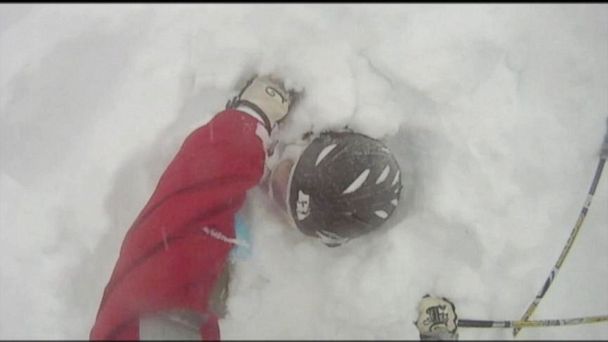Avalanches: Staying Alive as the Mountain Falls Around You
'Tis the season for avalanches.
Across the West, unstable snowpack conditions are creating new problems. Avalanche forecasters in Utah and Colorado say conditions for skiers and snowboarders in some backcountry areas are "dangerous" to "very dangerous."
"Conditions in a lot of areas right now are deceptively tricky," said Craig Gordon at the Utah Avalanche Center.
Davis LaMair went skiing with his brother Edwin this weekend in the backcountry near Vail, Colo., when Edwin suddenly found himself buried alive in an avalanche. Davis sped downhill to dig his brother out of the snow. Edwin suffered an injury to his knee but is otherwise OK.

(ABC News)
Davis knows he is lucky. On average, 28 people are killed every year in an avalanche, according to the Colorado Avalanche Information Center in Boulder Colo. On Monday, three skiers were trapped by an in-bounds avalanche at the Alta Ski Resort in Utah. The skiers were dug out by a rescue team and were not injured. Like Edwin LaMair, they are lucky to have escaped a force that can travel 60 miles an hour or faster.
"You literally have seconds to get out of the way," said Dale Atkins, president of American Avalanche Association.
Experts say the deeper the snow in an avalanche, the less chance of survival. That makes new technology, such as emergency beacons that rely on GPS to help rescuers locate victims, as well as ski airbags, critical safety gear. One airbag saved pro snowboarder Meesh Hytner in 2012 by helping float her safely to the top of the slide, out of danger.
Gordon said that over the next couple of weeks, conditions in many areas could become treacherous. He says conditions should get better as more snowstorms move across the region, dropping fresh snow that adds more weight and stability to the snowpack.